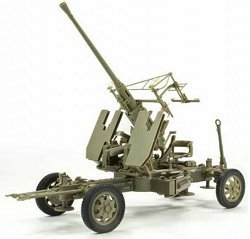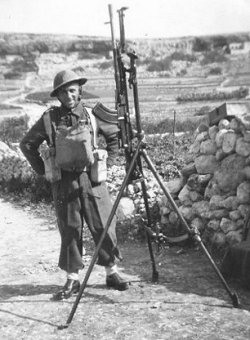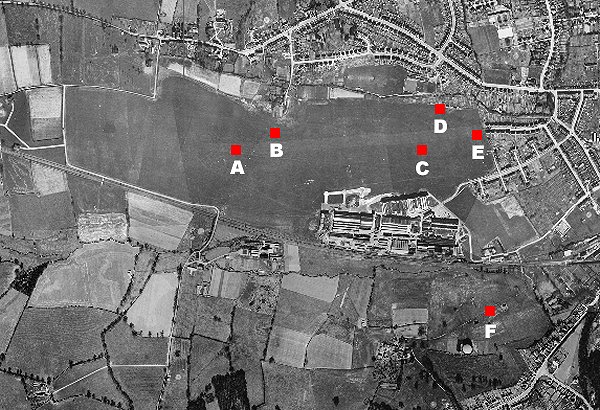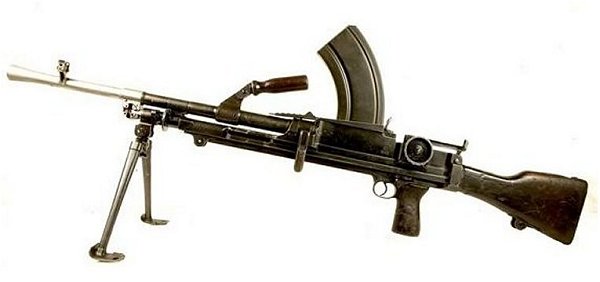Yeovil at war
anti-aircraft sites
Protecting Westlands
The 23rd Light Anti-Aircraft Regiment of the Royal Artillery (23 LAA Reg. RA), a well established pre-war TA Regiment, manned Yeovil's anti-aircraft batteries until July 1942, when they were posted to Ceylon. 23 Regiment had three batteries, numbered as 73, 74 and 130, of which 74 battery was stationed in Yeovil. It was equipped with 20mm Oerlikon light anti-aircraft guns although these were soon replaced by the Mark III Bofors gun.
 |
The QF 40mm Mark III Bofors gun (QF stood for 'quick firing') was the Army's standard light anti-aircraft (AA) weapon. Illustrated at left, these had the power to knock down aircraft of any size, yet were light enough to be mobile and easily maneuvered. They often operated alongside 3-inch (75mm) and 3.7 inch (95mm) heavy weapons. Apart from just four 3.7 inch guns, heavy AA weapons were not deployed at Yeovil where all the batteries were classed as 'light'. During the Second World War in Yeovil, certainly from 1941 until July 1942, the anti-aircraft defences were manned by 74 Light Anti Aircraft Battery of 23 Light Anti Aircraft Regiment Royal Artillery. The aerial photograph below, taken in 1946, is marked with the position of the light anti-aircraft batteries sited to protect Westlands airfield and factory. Each battery was equipped with a QF 40mm Mk III Bofors gun and a light machine gun, such as a Lewis or Bren gun on an anti-aircraft mounting as seen in the photograph at left. Each battery would have had an associated search light battery attached. |
|
 |
|
Yeovilians
remember... It appears that the Bofors gun located across the airdrome was exercising and had been accidentally fired and ruined the sergeants promotion. At the end of the War their score was enemy aircraft nil, roof one!"
Memories
of the
late
Walter
McGowan |
gallery

A 1946 aerial
photograph of
Westland's
airfield (still
with camouflaged
runway) and
factory showing
the approximate positions of
the protective
anti-aircraft
batteries.

The BREN (BR named for Brno, Czechoslovakia where it was largely designed and EN for Enfield, England where it was manufactured at the Royal Small Arms Factory) was adopted by Britain in the light machine gun role in 1935 after extensive trials during the late 1920's and early 1930's. It was used by the British Army until 1991.
The Bren Mark I was an air cooled gas-operated weapon and used the same .303 calibre ammunition as the standard British rifle, the Lee Enfield, with a cyclic rate of fire around 500 rounds per minute with an effective range of some 600 yards (550m). It weighed 22lb 2oz (10.5kg) and was 45.5" (1156mm) long with a 25" (635mm) barrel. In the anti-aircraft role it was mounted on a special AA trip as illustrated above.
This photograph is of my own Bren Mk I.
As a side note, my dad (later Factory Manager at RSAF Enfield) re-designed the gas plug and the folding bipod for later Marks of the Bren, while mum manufactured gas plugs, both at RSAF Enfield during the Second World War.